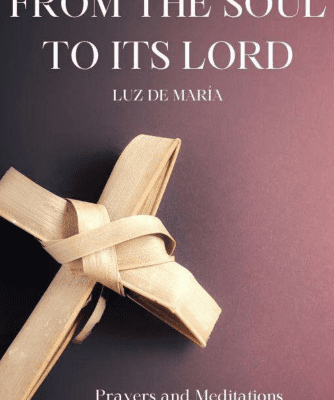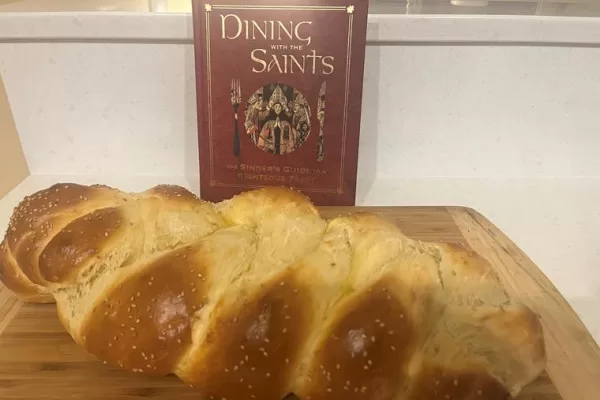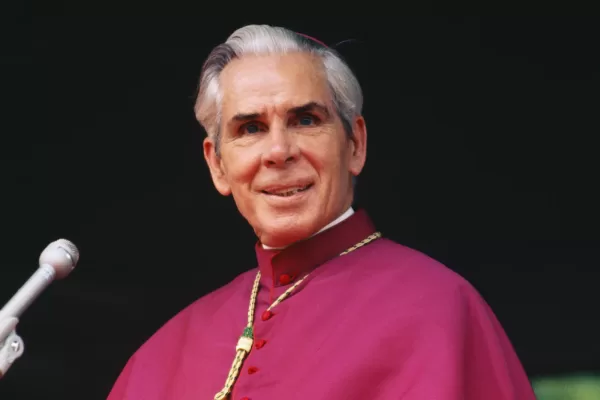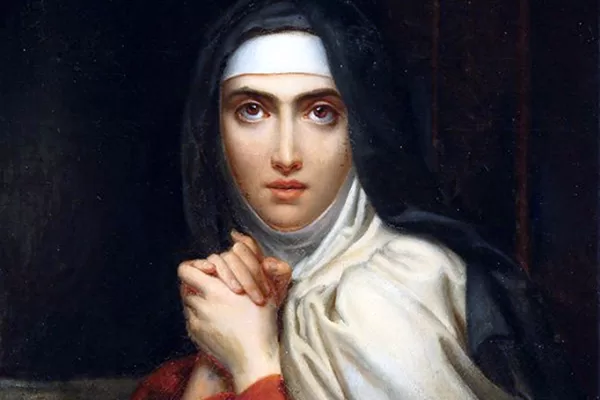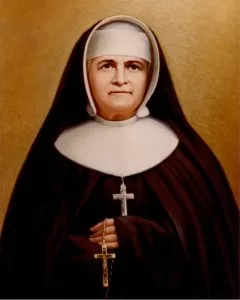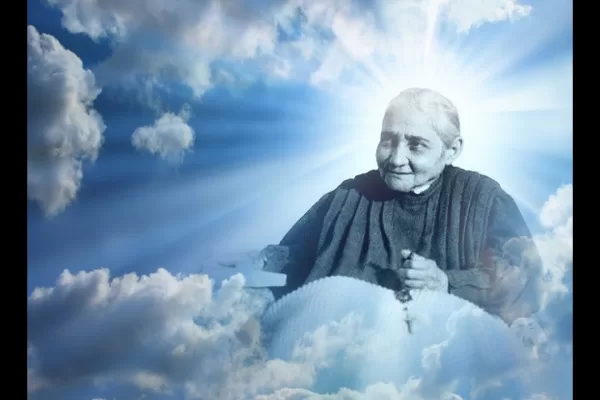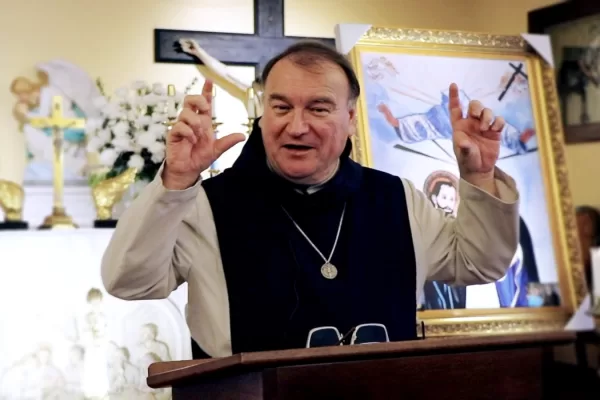1- RAFQA in Himlaya (1832 – 1859) She is like the lily of HimlayaGrown as a bud in the land of JrabtaAnd will grow thanks to the sky 1. The idea of Saint Rafqa’s basilica Saint Rafqa was born in Himlaya, one of the villages of Northern Metn near Bikfaya, on June 29, 1832. She was the only child of Saber El-Choboq Al Rayess and Rafqa Gemayel.On July 7, 1832, she was baptized and named Boutroussieh. Her parents taught her to love God and pray daily. At the age of seven, she suffered her first great loss with the death of her mother. In 1843, her father experienced financial difficulties and sent her to work as a domestic servant for four years in Damascus in the house of Assaad Al-Badawi, of the Lebanese Nationality. Rafqa became a beautiful, pleasant, humorous young woman, pure and tender with a serene voice. In 1847, she came back home to find that her father had remarried. His new wife wanted Rafqa to marry her brother. A conflict developed when her aunt tried also to arrange a marriage between her son and Rafqa. Rafqa asked God to help her and clear her thoughts. Thus, her decision, to devote her life to Jesus Christ and to become a nun was her greatest joy. 2- RAFQA in the Congregation of the Mariamettes (1859 – 1871) At that time, Rafqa felt drawn to the religious life and asked God to help her achieve her desire. She decided to go to the convent of Our Lady of Deliverance in Bikfaya. There, she joined the Mariamette Order, founded by Father Joseph Gemayel. When she entered the convent church, she felt deep joy and happiness. One look at the icon of Our Lady of Deliverance was enough to confirm God’s voice who told her to enter the religious life: “You will become a nun”. The Mother Superior accepted Rafqa with no questions asked. Rafqa entered the convent, and refused to go back home with her father and his wife, when they came to discourage her from becoming a nun. Following her postulate, Rafqa wore the congregation’s robe of novice on the feast of St. Joseph on March 19, 1861. A year later and at the same date, she pronounced her temporary vows. She was sent to the seminary in Ghazir to take charge of the kitchen services. Among the seminarians were Elias Howayek, who became a Patriarch, and Boutros El- Zoghbi, who became an Archbishop. Rafqa studied in her free time Arabic, calligraphy and arithmetic and also helped aspiring girls to join her congregation. In 1860, Rafqa was sent to Deir El Qamar to teach catechism. There, she witnessed the bloody clashes that occurred in Lebanon during that period. On one occasion, she risked her own life by hiding a child under her robe and saving him from death. After a year in Deir El Qamar, Rafqa returned to Ghazir. In 1863, she was sent to teach in a school of her congregation in Byblos. One year later, she was transferred to the village of Maad. There, with another nun, she spent seven years establishing a new school for girls, this was made possible through the generosity of Mr. Antoun Issa. 3- RAFQA in the Lebanese Maronite Order: In the Monastery of St. Simon El Qarn in Aito (1871 – 1897). While living in Maad and following a crisis in her congregation, Rafqa asked God to guide her to the right decision. Entering at St. George Church, to pray for help, she heard the Lord’s voice telling her: “You will remain a nun.” In that same night, she saw in her dreams St. George, St. Simon the Stylite and St. Anthony the Great, the Father of monasticism. St. Anthony the Great told her: “Join the Lebanese Maronite Order.” Her trip from Maad to the Maronite Monastery of St. Simon El Qarn in Aito was facilitated by the generosity of Mr. Antoun Issa. She was immediately admitted in the Order. She wore the novice robe on July 12, 1871, and pronounced her solemn vows on August 25, 1872 and chose the name “Sister Rafqa,” after her mother. She spent 26 years in the monastery of St. Simon and was a role model to the other nuns in her observation of the rules and her devotion to prayer and silence. Her life was full of sacrifice and austerity. On the first Sunday of October 1885, she entered the monastery’s church and began to pray asking Jesus to permit her to experience some of the sufferings He endured during His Passion. Her prayer was immediately granted: Unbearable pain began in her head and moved to her eyes. Her Superior insisted that she undergoes a medical treatment. After all local attempts to cure her had failed, she was sent to Beirut for treatment. Passing by St. John-Marcus Church in Byblos, her companions learned that an American doctor was in the area. So, they took her to him. He ordered an immediate surgery for her right eye. St. Rafqa refused anesthesia. In the course of the surgery, the doctor uprooted by mistake her eye which fell on the floor. Rafqa did not complain and told him: “For Christ’s Passion, God bless your hands and may God pay you back.” Within a short time, the disease struck the left eye. For the next 12 years she continued to experience intense pain in her head. As always, she remained patient and uncomplaining, praying in joy for the gift of sharing in Jesus’ suffering. In Saint Joseph Monastery Al Dahr in Jrabta, Batroun (1897 – 1914).. At Saint Simon’s monastery, lived sister Ursula Doumit who suffered from arthritis. Her doctors advised her to live near the coast. Sister Ursula’s brother, Fr. Ignatius Doumit decided to found a monastery for nuns in Jrabta in the district of Batroun. Fr. John Basbous, donated the land for the project. On November 3, 1897, six nuns, led by Mother Ursula Doumit, were…
